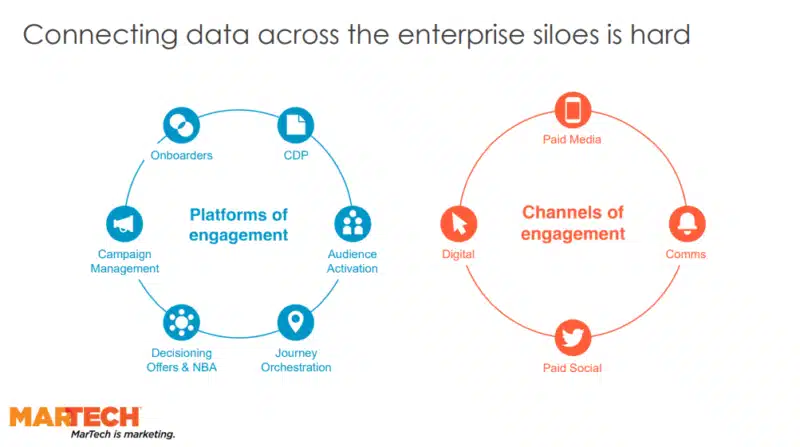Identity and attribution can give your first-party data strategy a boost
You can’t improve ROI without accurately measuring campaign performance. For that, you need solid data and identity.
Measuring campaign performance can be difficult as digital marketing channels multiply and customers drift across those varied channels.
“Identity and data are key to accurately measuring market performance,” said Gloria Ward, director of identity strategy at Acxiom, in a recent panel at The MarTech Conference (scroll down to see video of the full session).

Ever wonder how frequently marketing software is replaced?
Here’s the answer.
Download the 2022 MarTech Replacement Survey!
She added, “They’re also the key to acting on the results such as better audience management, better activation, better modeling, all which leads to better customer experience.”
First-party data strategy for the changing lives of customers
With so many channels and digital touchpoints, new challenges arise for marketers trying to manage all the data signals. Often the data is siloed in separate teams or data solutions.
“To put it simply, the way we’ve traditionally treated data is static,” said Ward. “But data is about people, and people are always changing – their lives change, and with that the touchpoints and signals and identifiers for them change as well.”

These constant changes also make it more difficult for marketers to connect the dots and measure performance for campaigns. That’s where using an identity graph can help.
Using a first-party identity graph
Creating a first-party identity graph in-house allows marketers to bring together data that currently reside in silos within the organization. It also helps connect data when working in a privacy-compliant way with publishers and other partners.
Dig deeper: What is identity resolution?
Not only is this process helping improve your handle on data, but it also allows marketers to take another look at the technology they’re using.
“As you’re building out your first-party data strategy, evaluate the existing technology and define your requirements before making any new technology investments,” said Ward. “Make sure, too, that your technology not only supports your current business needs, but that you’re thinking about the future and that you’re designing [your stack] with the future in mind.”
She added, “You should also have built-in privacy controls. Be flexible and scalable and interoperable within the greater ecosystem.”
Make sure to create use cases to add to your first-party data strategy, and link this all with an overall roadmap.

Improving efficiency with attribution
With a first-party data strategy and identity graph that connects disparate data, you now have a better 360-view of your customers. This improved data management can also lead to better efficiencies in media spend, as well as operational efficiencies across the organization.
Dana Goff, head of financial services strategy, pointed to how one major brand Acxiom worked with reduced their cost-per-conversion rate by 15% by using an identity graph that also sidestepped the use of third-party cookies, which are getting phased out across the industry.
The brand used brand-owned data capture across their paid media exposure and visits to their own website touchpoints.
This strategy “allowed capturing of the data in real-time, thus reducing latency,” said Goff. “And it increased match rates to website visitors to their conversions and to their offline contact history.”
The brand saw a four-fold increase in the number of media exposures that they could match to customers, so they gained much more visibility into who they were connected with, and also who they were converting.
By having a first-party data strategy that includes an identity graph, marketers can prove the effectiveness of their media spend and other campaign efforts. This also makes it easier to improve future programs and overall efficiency.
Related stories